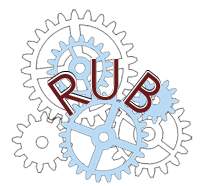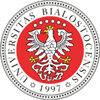Proszę używać tego identyfikatora do cytowań lub wstaw link do tej pozycji:
http://hdl.handle.net/11320/18994Pełny rekord metadanych
| Pole DC | Wartość | Język |
|---|---|---|
| dc.contributor.author | Romaniuk-Cholewska, Dominika | - |
| dc.date.accessioned | 2025-10-09T08:51:56Z | - |
| dc.date.available | 2025-10-09T08:51:56Z | - |
| dc.date.issued | 2025 | - |
| dc.identifier.citation | Linguodidactica, T. 29, 2025, s. 173-187 | pl |
| dc.identifier.uri | http://hdl.handle.net/11320/18994 | - |
| dc.description.abstract | This study explores students’ perceptions of AI-assisted translation, with a focus on how they engage with and evaluate AI-generated outputs. By analysing students’ reflections on translation exercises using Large Language Models (LLMs) such as Google Gemini and ChatGPT-4o, the research examines the perceived benefits, challenges and limitations of AI in literary translation. The results reveal that while students recognise the efficiency and support AI tools provide, they also identify issues related to contextual accuracy, cultural adaptation and translation reliability. The findings suggest that AI literacy and critical engagement with machine-generated translations should be integral components of translator training. Rather than replacing human expertise, AI tools serve as collaborative aids that require students to apply analytical and revision skills to ensure translation quality. These insights contribute to the ongoing discussion on the role of AI in translation education and its implications for future translator training. | pl |
| dc.description.abstract | Niniejsze badanie ukazuje podejście studentów do tłumaczeń wspomaganych sztuczną inteligencją (AI), przy czym szczególną uwagę zwraca się na to, w jaki sposób angażują się oni i oceniają wyniki generowane przez AI. Refleksje studentów na temat ćwiczeń tłumaczeniowych z wykorzystaniem dużych modeli językowych (LLM), takich jak Google Gemini i ChatGPT-4o, dostarczają wgląd w potencjalne korzyści, wyzwania oraz ograniczenia związane ze sztuczną inteligencją w tłumaczeniach literackich. Wyniki wkazują, że choć studenci doceniają wydajność i wsparcie zapewniane przez narzędzia AI, jednocześnie dostrzegają problematyczne kwestie dotyczące poprawności kontekstowej, adaptacji kulturowej i rzetelności tłumaczenia. Wnioski sugerują, że umiejętność korzystania ze sztucznej inteligencji i krytycznego spojrzenia na tłumaczenia generowane maszynowo powinny być integralnymi elementami szkolenia tłumaczy. Narzędzia sztucznej inteligencji służą jako dodatkowa pomoc, która wymaga od studentów zastosowania umiejętności analitycznych i weryfikacyjnych w celu zapewnienia jakości tłumaczenia. Wyniki badania stanowią wkład w toczącą się dyskusję na temat roli sztucznej inteligencji w edukacji tłumaczeniowej i jej implikacji dla przyszłego szkolenia tłumaczy. | pl |
| dc.language.iso | en | pl |
| dc.publisher | Wydawnictwo Uniwersytetu w Białymstoku | pl |
| dc.rights | CC BY-SA 4.0 Uznanie autorstwa – Na tych samych warunkach | pl |
| dc.rights.uri | https://creativecommons.org/licenses/by-sa/4.0/deed.pl | pl |
| dc.subject | AI-assisted translation | pl |
| dc.subject | student perceptions | pl |
| dc.subject | computer-assisted literary translation (CALT) | pl |
| dc.subject | Large Language Models (LLMs) | pl |
| dc.subject | AI literacy in translation studies | pl |
| dc.subject | tłumaczenie wspomagane sztuczną inteligencją | pl |
| dc.subject | tłumaczenie literackie wspomagane komputerowo (CALT) | pl |
| dc.subject | duże modele językowe (LLM) | pl |
| dc.subject | znajomość sztucznej inteligencji w przekładoznawstwie | pl |
| dc.title | Analysis of Critical Thinking Skills: How do Students Perceive and Evaluate AI Translation Tools? | pl |
| dc.title.alternative | Analiza umiejętności krytycznego myślenia: jak studenci postrzegają i oceniają narzędzia tłumaczeniowe AI? | pl |
| dc.type | Article | pl |
| dc.rights.holder | CC BY-SA 4.0 Uznanie autorstwa – Na tych samych warunkach | pl |
| dc.identifier.doi | 10.15290/lingdid.2025.29.12 | - |
| dc.description.Email | d.romaniuk-cholewska@uwb.edu.pl | pl |
| dc.description.Affiliation | University of Białystok | pl |
| dc.description.references | AI tools in teaching and learning, “Teaching Commons” 2023, April 21, [online], https://teachingcommons.stanford.edu/news/ai-tools-teaching-and-learning [accessed: 18.03.2025]. | pl |
| dc.description.references | Alkhawaja L., Artificial intelligence in education, “International Journal of Computer-assisted Language Learning and Teaching” 2023, 13 (1), pp. 1–22, [online], https://doi.org/10.4018/ijcallt.329607 [accessed: 18.03.2025]. | pl |
| dc.description.references | Bazhouni M., Integrating critical thinking skills in higher education, “Education and Linguistics Research” 2018, 4 (1), 65, [online], https://doi.org/10.5296/elr.v4i1.12964 [accessed: 18.03.2025]. | pl |
| dc.description.references | Berry P., 50 Memorable Advertising Slogans, 2023, February 2, [online], https://www.linkedin.com/pulse/50-memorable-advertising-slogans-patricia-berry [accessed: 18.03.2025]. | pl |
| dc.description.references | Bowker L., Machine Translation and Global Research: Towards Improved Machine Translation Literacy in the Scholarly Community, 2019. | pl |
| dc.description.references | Chan C.K.Y., Is AI changing the rules of academic misconduct? An in-depth look at students’ perceptions of “AI-giarism”, “arXiv (Cornell University)” 2023, [online], https://doi.org/10.48550/arxiv.2306.03358 [accessed: 18.03.2025]. | pl |
| dc.description.references | Chan C.K.Y., Lee K.K.W., The AI generation gap: Are Gen Z students more interested in adopting generative AI such as ChatGPT in teaching and learning than their Gen X and millennial generation teachers?, “Smart Learning Environments” 2023, 10 (1), [online], https:// doi.org/10.1186/s40561-023-00269-3 [accessed: 18.03.2025]. | pl |
| dc.description.references | Dong Y., Revolutionizing Academic English Writing through AI-Powered Pedagogy: Practical Exploration of Teaching Process and Assessment, “Journal of Higher Education Research” 2023, 4 (2), 52, [online], https://doi.org/10.32629/jher.v4i2.1188 [accessed: 18.03.2025]. | pl |
| dc.description.references | Dwyer C.P., Hogan M.J., Stewart I., An integrated critical thinking framework for the 21st century, “Thinking Skills and Creativity” 2014, 12, pp. 43–52, [online], https://doi.org/10.1016/j.tsc.2013.12.004 [accessed: 18.03.2025]. | pl |
| dc.description.references | English L.D., Ways of thinking in STEM-based problem solving, “ZDM” 2023, 55 (7), pp. 1219–1230, [online], https://doi.org/10.1007/s11858-023-01474-7 [accessed: 18.03.2025]. | pl |
| dc.description.references | Ennis R.H., The Nature of Critical Thinking: An Outline of Critical Thinking Dispositions and Abilities, 2011. | pl |
| dc.description.references | Ethical use of AI in writing assignments, Center for Teaching Excellence, [online], https://cte.ku.edu/ethical-use-ai-writing-assignments [accessed: 18.03.2025]. | pl |
| dc.description.references | Facione P.A., Critical Thinking: A Statement of Expert Consensus for Purposes of Educational Assessment and Instruction, 1990. | pl |
| dc.description.references | Fairuz T., Kaniawati I., Sinaga P., Integrated science teaching materials oriented on critical thinking skills and information literacy, “Journal of Physics. Conference Series” 2019, 1157, 022037, [online], https://doi.org/10.1088/1742-6596/1157/2/022037 [accessed: 18.03.2025]. | pl |
| dc.description.references | Göpferich S., Towards a model of translation competence and its acquisition: The longitudinal study TransComp, 2009. | pl |
| dc.description.references | Gozalo-Brizuela R., Garrido-Merchán E.C., A survey of Generative AI Applications, “arXiv (Cornell University)” 2023, [online], https://doi.org/10.48550/arxiv.2306.02781 [accessed: 18.03.2025]. | pl |
| dc.description.references | House J., Translation Quality Assessment: Past and Present, [in:] Translation: A Multidisciplinary Approach. Palgrave Advances in Language and Linguistics, J. House (ed.), London 2014, [online], https://doi.org/10.1057/9781137025487_13 [accessed: 18.03.2025]. | pl |
| dc.description.references | Huang F., The Application of AI Translation Technologies in Translation Teaching: Challenges and opportunities, “DEStech Transactions on Social Science, Education and Human Science, emit” 2020, [online], https://doi.org/10.12783/dtssehs/emit2020/35124 [accessed: 19.03.2025]. | pl |
| dc.description.references | Ilkka T., The impact of artificial intelligence on learning, teaching, and education, Ministerio De Educación, 2018, [online], https://doi.org/10.2760/12297 [accessed: 19.03.2025]. | pl |
| dc.description.references | Ismail N., Critical Thinking Skills of an Eighth Grade Male Student with High Mathematical Ability in Solving Problem, “Journal of Physics. Conference Series” 2018, 947, 012073, [online], https://doi.org/10.1088/1742-6596/947/1/012073 [accessed: 19.03.2025]. | pl |
| dc.description.references | Kanwal A., Butt I.H., Impact of critical thinking skills on prospective teachers’ academic achievement, “Review of Applied Management and Social Sciences” 2021, 4 (4), pp. 773–781, [online], https://doi.org/10.47067/ramss.v4i4.182 [accessed: 19.03.2025]. | pl |
| dc.description.references | Kong L., Artificial Intelligence-Based Translation Technology in Translation Teaching, “Computational Intelligence and Neuroscience” 2022, pp. 1–9, [online], https://doi.org/10.1155/2022/6016752 [accessed: 19.03.2025]. | pl |
| dc.description.references | Kussmaul P., Training the Translator, 1995. | pl |
| dc.description.references | Liang Y., Balancing: The effects of AI tools in Educational context, “Frontiers in Humanities and Social Sciences” 2023, 3 (8), pp. 7–10, [online], https://doi.org/10.54691/fhss.v3i8.5531 [accessed: 19.03.2025]. | pl |
| dc.description.references | Liu M., Exploring the Application of Artificial intelligence in Foreign Language Teaching: Challenges and future development, “SHS Web of Conferences” 2023, 168, 03025, [online], https://doi.org/10.1051/shsconf/202316803025 [accessed: 19.03.2025]. | pl |
| dc.description.references | Lund B.D., ChatGPT and a new academic reality: Artificial Intelligence-written research papers and the ethics of the large language models in scholarly publishing, “JASIST” 2023, March 10, [online], https://asistdl.onlinelibrary.wiley.com/doi/10.1002/asi.24750 [accessed: 19.03.2025]. | pl |
| dc.description.references | Paul R., Elder L., Aspiring Thinker’s Guide to Critical Thinking, 2019. | pl |
| dc.description.references | Pietrzak P., Metacognitive translator competence: From other-regulation to self-regulation, “Konińskie Studia Językowe” 2021, 9 (2), pp. 229–247, [online], https://ksj.konin.edu.pl/wp-content/uploads/2022/04/KSJ-92-229-247-Pietrzak.pdf [accessed: 19.03.2025]. | pl |
| dc.description.references | Popenici S.A.D., Kerr S., Exploring the impact of artificial intelligence on teaching and learning in higher education, “Research and Practice in Technology Enhanced Learning/Research and Practice in Technology Enchanced Learning” 2017, 12 (1), 22, [online], https://doi.org/10.1186/s41039-017-0062-8 [accessed: 19.03.2025]. | pl |
| dc.description.references | Pym A., On Translator Ethics: Principles for Mediation between Cultures, 2012. | pl |
| dc.description.references | Roksela K., 23 przykładowe hasła reklamowe, które wpadają w ucho, “WeNet” 2024, January 31, [online], https://wenet.pl/blog/23-przykladowe-hasla-reklamowe-ktore-wpadaja-wucho [accessed: 19.03.2025]. | pl |
| dc.description.references | Wang Y., Artificial intelligence Technologies in College English Translation teaching, “Journal of Psycholinguistic Research” 2023, 52 (5), pp. 1525–1544, [online], https://doi.org/10.1007/s10936-023-09960-5 [accessed: 19.03.2025]. | pl |
| dc.description.references | Weber-Wulff D. et al., Testing of detection tools for AI-generated text, “International Journal for Educational Integrity” 2023, 19 (1), [online], https://doi.org/10.1007/s40979-023-00146-z [accessed: 19.03.2025]. | pl |
| dc.description.references | Wei Z., The development prospect of English translation software based on artificial intelligence technology, “Journal of Physics. Conference Series” 2020, 1533 (3), 032081, [online], https://doi.org/10.1088/1742-6596/1533/3/032081 [accessed: 19.03.2025]. | pl |
| dc.description.references | Weidinger L. et al., Ethical and social risks of harm from Language Models, “arXiv.org” 2021, [on-line], https://arxiv.org/abs/2112.04359 [accessed: 19.03.2025]. | pl |
| dc.description.references | WolneLektury.pl, [online], https://wolnelektury.pl/katalog/lektura/pawlikowska-jasnorzewska-madama-butterfly.html [accessed: 19.03.2025]. | pl |
| dc.description.references | Woo J.H., Choi H., Systematic review for AI-based language learning tools, “Diji’teol Keontencheu Haghoe Nonmunji/Dijiteol Kontencheu Hakoe Nonmunji” 2021, 22 (11), pp. 1783–1792, [online], https://doi.org/10.9728/dcs.2021.22.11.1783 [accessed: 19.03.2025]. | pl |
| dc.description.references | Yan L. et al., Practical and ethical challenges of large language models in education: A systematic scoping review, “British Journal of Educational Technology” 2032, August 6, [online], https://bera-journals.onlinelibrary.wiley.com/doi/10.1111/bjet.13370 [accessed: 19.03.2025]. | pl |
| dc.description.references | Zaman S., Dar H., Arshad S.S., Assessing Students’ Life Skills and their Sources of Learning, “Review of Education, Administration and Law” 2023, 6 (2), pp. 167–179, [online], https://doi.org/10.47067/real.v6i2.323 [accessed: 19.03.2025]. | pl |
| dc.description.references | Zheng S., Zhu S., A study of computer aided translation based on artificial intelligence technology, “Journal of Physics. Conference Series” 2020, 1646 (1), 012127, [online], https://doi.org/10.1088/1742-6596/1646/1/012127 [accessed: 19.03.2025]. | pl |
| dc.description.references | Artificial Intelligence in Education, 2023. | pl |
| dc.identifier.eissn | 2957-0204 | - |
| dc.description.volume | 29 | pl |
| dc.description.firstpage | 173 | pl |
| dc.description.lastpage | 187 | pl |
| dc.identifier.citation2 | Linguodidactica | pl |
| dc.identifier.orcid | 0000-0002-9920-1050 | - |
| Występuje w kolekcji(ach): | Artykuły naukowe (SzkDokt) Linguodidactica, 2025, tom XXIX | |
Pliki w tej pozycji:
| Plik | Opis | Rozmiar | Format | |
|---|---|---|---|---|
| Linguodidactica_29_2025_D_Romaniuk_Cholewska_Analysis_of_Critical_Thinking_Skills.pdf | 208,85 kB | Adobe PDF | Otwórz |
Pozycja ta dostępna jest na podstawie licencji Licencja Creative Commons CCL


